Small Inventions? They Changed How People Lived in the Hellenistic Age


Knowledge and technology have advanced throughout history in uneven spasms. The Neolithic dawn (eighth to seventh millennia B.C.E.a) was one such time. The Italian Renaissance (14th century C.E.) was another.
Between these two spikes in the graph was the Hellenistic period (336–44 B.C.E.),b in many ways greater than both. The Italian Renaissance, for example, was distinguished by advances in knowledge (and a burst of extraordinary creativity in the arts), but this only laid the foundation for an industrial revolution 200 years later. By comparison, the Hellenistic period witnessed a full industrial flourishing. Only when we view the Hellenistic period in the light of what went before and what came after can we fully appreciate what a remarkable age it was.
For the most part, the immense body of literature on the Hellenistic period focuses on art and political history. But even more-specialized works that concentrate on Hellenistic thought, philosophy and trade pay scant attention to the technological advances, the social and economic implications of inventions and the “industrial” innovations of the age.1 That art and thought were revolutionized at this time is well understood; much less understood is the technological revolution.
An exception is a work by L. Sprague de Camp, in which he observes, “The Hellenistic age was in many ways like our own century. It was a time of immense intellectual ferment. … It was a time on the one hand of a scramble for the wealth created by the advance of technology and the spread of commerce … but science and engineering flourished as never before.”2
Yet even de Camp, while recognizing the importance of the technological revolution, based his discussion mostly on historical texts, rather than on archaeological artifacts that reflect daily living.
This article will focus on the latter, an area hitherto almost completely ignored. Perhaps this neglect exists because there was no single invention—nor even two or three inventions—to which scholars can point that created a technological revolution. Instead, there were dozens of small advances—some quite simple technical changes, others quite imaginative inventions—that together dramatically altered the way goods were made and marketed. Each of these technological advances may, perhaps, by itself be considered minor, but together they had a major impact.
Much of the material I will discuss comes from Palestine and accounts in large part for the dramatic change from the relative poverty of the area in the fifth to fourth centuries B.C.E. (the period of the return of the exiles from Babylon) to the relative wealth of the Hasmonean period (165–33 B.C.E.) and the Herodian period (33 B.C.E.–76 C.E.) that followed.
Let us begin with something that seems quite simple: the addition of a foot disc on the potter’s wheel. This addition streamlined an entire industry. Pottery was of course known for thousands of years before the Hellenistic period. As far back as the fifth millennium B.C.E., toward the end of the Neolithic period, people somehow discovered that clay mixed with water would become hard as stone after firing. But, unlike stone, it was beautifully malleable before firing and could be shaped into hundreds of different forms. What an invention! Here was a material that was cheap, abundant, easily accessible and easily transformable. This in itself caused a social and material revolution of sorts.
And what a boon for archaeologists thousands of years later. Everyday pots were easily breakable, but the resulting sherds were indestructible. Unlike metal and glass, pottery sherds were not recycled. Moreover, neither weather nor chemicals had much effect on them. So these ubiquitous indicators of human occupation became the archaeologist’s best friend, often enabling the archaeologist to separate and date strata. Perhaps, today, they are overvalued. In the words of M. I. Finlay, “We are too often victims of that great curse of archaeology, the indestructibility of pots.”3
In any event, the next step in pottery development was the invention of the potter’s wheel. Until then, storage jars, cooking pots, dishes for eating and drinking, lamps, ritual figurines and other ceramic artifacts were all shaped by hand.
Throwing pottery on a wheel was sporadically known in Egypt as early as the 1st Egyptian Dynasty (3100–2890 B.C.E.). It became a production standard by the IVth Dynasty (2680–2494 B.C.E.) The earliest representation of a potter’s wheel in Egypt dates to the VIth Dynasty (2345–2181 B.C.E.).
All potter’s wheels in Egyptian paintings, reliefs and models,4 as well as the many potter’s wheels of varying periods excavated in Palestine,5 Syria and neighboring countries, have a short conical stand. The wheel itself is always turned by hand, as can be seen on the wheels on painted Greek vases of the Classical period (fifth to fourth centuries B.C.E.).6
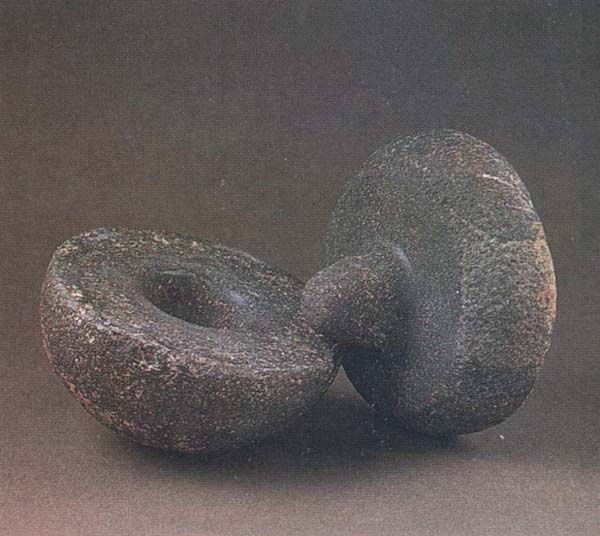
The considerable pre-Hellenistic pictorial and archaeological evidence available also indicates that all potter’s wheels were activated by hand. Some pictures, however, show the driving being done by a person other than the potter, either a slave or an apprentice, but it is still by hand.
One great invention of the Hellenistic period was to lengthen the stand and add a lower wheel activated by the potter’s feet. Interestingly, this type of potter’s wheel is still used today despite the easy availability of electrically driven devices.
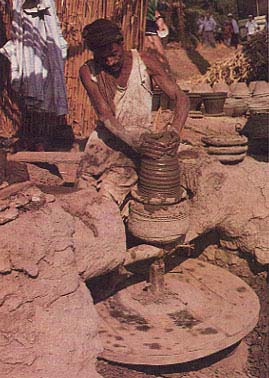
On the potter’s wheel a vessel can be fashioned, more easily than by hand, to a smooth, uniform thickness. More pleasing shapes can be created, and the raw material can be used more economically. The pots can dry more uniformly, preventing distortions and cracks.
The addition of the lower wheel gives the potter better control over the movement and speed of the wheel. The foot wheel also acts as a fly wheel, increasing the power.7 It also serves as a labor-saving device because it eliminates the need for a second person to turn the wheel, which means faster, more efficient production. With the very substantial increase in agricultural trade in the Hellenistic period came a concomitant increase in the demand for more amphoras, the large storage jars that were the principal shipping container in antiquity. The improving standard of living also enlarged the demand for household ware. The potter’s foot wheel helped meet this new demand for clay vessels.
Another significant Hellenistic contribution to ceramic manufacturing was the bivalve mold.

As we have noted, most early ceramics—down to sometime in the Middle Bronze Age in Palestine (about 1900 B.C.E.)—were handformed. Once the potter’s wheel was introduced, almost all ceramics were then wheel-thrown. Molds were few, however, and even then they were all open half-molds. Mostly they were used for the front part of votive figures. The front of such figures was molded, but the back, in most cases, was handformed.8
To obtain a good product from a bivalve mold, the two halves of the valve mold must fit together closely. Until the Hellenistic period, that was the rub: they did not. The Hellenistic period’s spectacular new contribution to mold technology was the invention of keys. A key is a protrusion from one valve that fits into a matching indentation in the other. With keys you can obtain, every time, a perfect fit of the two halves of a twin-valve mold.9 Each of the two halves of the mold has keys that fit together.
What this did to ceramic manufacturing can be illustrated best by looking at oil lamps. While the production of oil lamps was an important aspect of ceramic production in Palestine from at least the Middle Bronze Age (c. 1800 B.C.E.) and in Greece from the seventh to sixth centuries B.C.E., the invention of the bivalve mold with keys revolutionized the industry. Until this time, oil lamps were made on a wheel by local potters, who could be found in almost every village. These potters were part of a local industry that supplied most of the ceramic needs of the ordinary household, including not only oil lamps but also some of the requirements for worship (the ubiquitous votive figures). With the invention of the bivalve mold with keys, new skills were needed. Wheel-throwing is itself a skilled craft, but a different skill is needed to make an object from a mold. A sophisticated artisan is needed to design and craft a master, or as it is often called, the archetype—of a lamp, a figurine or a mold-made vessel. (Only a few such masters have survived.)10 The archetype, or master, needed to be made only once, so it was usually carefully and artistically decorated and was generally a far more sophisticated product than the old, wheel-thrown lamps. From the archetype, negative molds were cast, mostly of plaster, but sometimes of fired pottery. Many molds could be made from one archetype. Into these molds, the clay was then pressed, and the two halves were closed and left to dry. When the mold was opened, the dry object was fired.
This process not only required different skills, but mold production lent itself to a new division of labor. Different people could do different, repetitive tasks. As a result, large establishments emerged that produced enormous quantities of identical lamps that they marketed over large areas.11
Much the same thing happened with clay votive figures, toys and even figurative vessels, which were produced in the same way sometimes by the same large manufacturing establishments.12
A third important innovation in pottery manufacture occurred in the Hellenistic period. The increase in wealth of some segments of the population led to an improved standard of living that created a market for more luxury items. The taste of the age tended to shiny, decorated artifacts. The pottery manufacturers responded with the development of what is known as terra sigillata ware. This is reddish, slipped pottery (slip is a paste of pigment-colored clay and water applied to the pottery just before firing). Much terra sigillata ware is made in a mold with decorations, and some is decorated separately with mold-made appliques. Terra sigillata ware first developed in the eastern Mediterranean about 200 B.C.E.13 Later it spread to the West. The most famous centers in the West were Arrezo and Pouzoli in Italy. After the conquest of Gaul by Julius Caesar (58–51 B.C.E.), terra sigillata ware was also produced in large centers in Gaul and Germany.
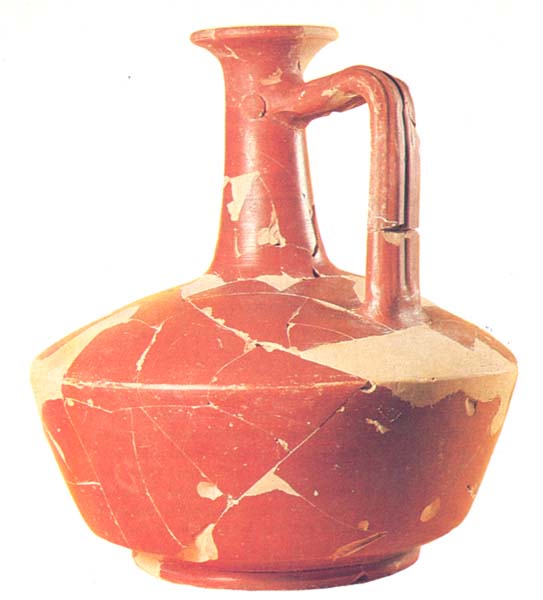
Glass manufacturing was another area of substantial innovation in the Hellenistic period.
Man-made glass was manufactured as early as the Bronze Age (the precise date depends on how you define glass). When heated to about 1100–1300 degrees Fahrenheit, glass becomes viscous and can be formed or shaped. Viscous glass was wrapped around a sand core that was later scooped out, thus forming a vessel. This manufacturing technique was known at least since the 15th century B.C.E. and was used almost until the end of the Hellenistic period.
However, glass can also be heated to higher temperatures. At about 2200 degrees Fahrenheit, it becomes a liquid that can be cast just like copper or bronze. Glass casting was done, most likely, by the same artisans who cast metals and in the same workshops. Both metal casting and glass casting utilize the lost-wax process. In this technique, the artifact is first created—either freehand or from a stone or plaster mold—in wax. Next the wax is covered with clay, which is then heated until the wax melts and flows out. When the wax has been melted out, the clay becomes a mold into which molten glass or metal can be poured. Metal casting by the lost wax process was known as early as the fourth millennium B.C.E.14

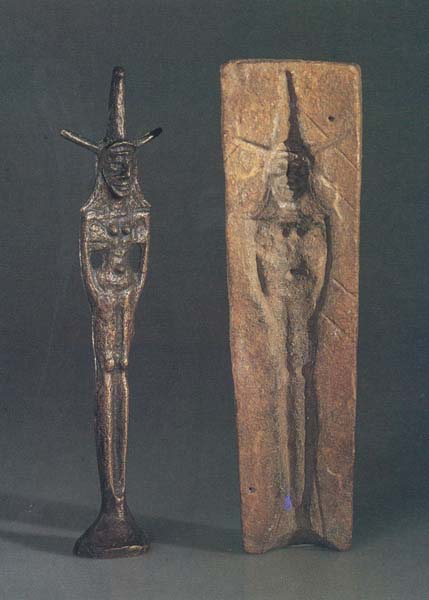
An important improvement was made in glass casting in the Hellenistic period, but we have no idea what it was. We know it occurred because of the enormous increase in the quantity of cast glass objects in this period. In earlier periods we find a bowl here and there. But in archaeological strata of the second and first centuries B.C.E., we sometimes find the remains of thousands of cast glass bowls at a single site.15 This is all the more remarkable when you consider that the cullet (the technical name for waste and broken glass) is suitable for remelting. Like metal, glass too can be reused. And that is the common explanation as to why metal vessels are so rarely found in excavations. The astonishing quantities of cast glass bowls, however, point to some sort of new inexpensive technology, but the details continue to elude us.
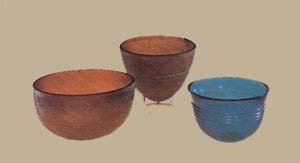
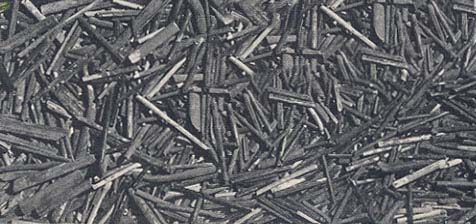
Even more important than the still unknown improvement in glass-casting technology was the invention of glass-blowing—another Hellenistic period contribution to progress. This invention occurred about the middle of the first century B.C.E., perhaps in Jerusalem.16
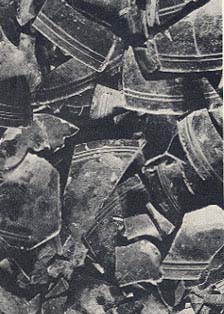
Glass blowing utilizes viscous glass heated to a temperature of about 1300 degrees Fahrenheit. Instead of wrapping the viscous glass around a core, it is expanded by blowing into it through a hollow tube. The hollow viscous bubble is, of course, easily shaped. Very soon after this technique was introduced, quantities of blown glass vessels became a commonplace of everyday life. Judging by the huge quantities of glass sherds found in strata dated around the turn of the era, blown glass must have been very inexpensive.
Improvements in glass-making techniques also led to a more artistic, colorful style of mosaic carpets. Mosaic carpets in wealthy homes and places of worship are known as early as the Classical period (sixth to fifth centuries B.C.E.), and possibly even earlier. Elaborate mosaic carpets have been found, for example, in Pella,17 the capital city of Macedonia. But these early mosaic carpets are all made of pebbles; that is, of stones used as found, after having been sorted according to size, shape and color. Beginning in the second century B.C.E.,18 however, pebbles were replaced by cut stone cubes called “tesserae.” The manufacturing of tesserae was instituted at the height of the Hellenistic period. The same technique of producing mosaics remains in use today.19
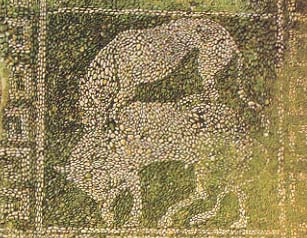
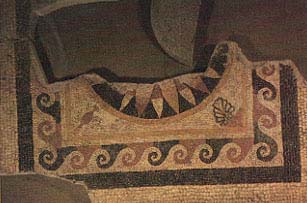
As a result of this new manufacturing technique, the mosaicist was no longer dependent on the natural, limited supply of pebbles. Moreover, stones or tesserae of different colors could be imported from faraway places, providing the mosaicist with a far greater variety of colors and hues. (A fast-growing trade in building stone also developed during this period.)20 Finally, colors that were not easily available in stones—bright blues and greens, for instance—could be made from glass.21 Glass tesserae, of course, were manufactured by the same new techniques used for casting glass, already referred to. From the second century B.C.E. on, mosaic flooring became extremely widespread. Cutting tesserae, designing floors and laying them became a new industry, employing large numbers of often ambulant artisans.

Another imaginative Hellenistic invention was the geographically and seasonally adjusted sundial. The earliest such sundial recovered dates to the third century B.C.E. In the Classical period, time was measured in terms of day and night. The division of the day into 12 seasonally adjusted hours was a new Hellenistic conception. Knowledge of astronomy, mathematics, geometry and geography obviously provided the theoretical basis for improvements in timekeeping.

Hundreds of Hellenistic and early Roman sundials have been recovered.22 A number have been found in Jerusalem. An especially interesting one comes from the debris of the Roman destruction of the Temple in 10 C.E. This sundial may well have been used to time the duties of Temple officiants.23
While medical texts are known from the Classical period (fifth-fourth centuries B.C.E.) and even much earlier in Egypt, the first evidence we have of surgical instruments comes from the third century B.C.E.24 In the first century B.C.E., large quantities of surgical instruments begin to appear.25 In Pompeii, some houses in which quantities of surgical instruments were found have been identified as belonging to medical practitioners.26 The proliferation of medicine and surgery in the early Roman period is surely a result of the scientific openness and advances of the Hellenistic period.
Another important innovation of that period was the horseshoe.27 This development considerably improved transportation, because the stamina of a shoed horse is incomparably greater than that of a shoeless horse. Moreover, the transportation industry, always an important economic factor, became even more important with the unification of the ancient world, first under Alexander and then under Roman rule, and with the increasing industrialization of society at large.
The list could go on and on. I could mention, for example, the screw pump28 and the musical organ.29 Organs are first pictured on late Hellenistic pottery figures and oil lamps.30 A nearly complete organ from the second century C.E. was excavated in Hungary.31
All this does not, however, tell us why this industrial leap occurred in this particular period. This is perhaps too large a subject for this article. We might suggest, nevertheless, that advances in Greek and Eastern thought provided the theoretical and scientific basis for this technological revolution and that Roman organizational and administrative genius and the Pax Romana provided the necessary conditions for the diffusion of the new techniques and knowledge.
New Dig at Tiberias
The first full-scale excavation of ancient Tiberias offers volunteers a chance to pioneer a rich site. Located on the western shore of the Sea of Galilee, Tiberias was founded about 20 A.D. by Herod Antipas and named for the Roman emperor Tiberius. In the third century A.D., Tiberias became the seat of Jewish political and religious leadership. The remains of Herod Antipas’s palace, burned in the First Jewish Revolt against Rome (66–70 A D.), are among the anticipated finds.
A six-year excavation program will transform Tiberias into a major archaeological park. The first digging season will run from October through November 1990. The cost for volunteers is $20 per day, which includes accommodations, private beach, trips and lectures. Contact: Dr. Yizhar Hirschfeld, Israel Antiquities Authority, POB 586, 91004 Jerusalem, Israel. Tel. (02) 292607, Fax (02) 292628.
MLA Citation
Footnotes
B.C.E. (Before the Common Era) and C.E. (Common Era) are the scholarly alternate designations corresponding to B.C. and A.D.
Endnotes
See, for example, John Onians, Art and Thought in the Hellenistic Age: The Greek World View, 350–50 B.C. (London, 1979), which has a good bibliography; M. Rostovtzeff, Social and Economic History of the Hellenistic World, 3 vols. (Oxford: Oxford Univ. Press, 1952); Helmut Wilsdorf, “Technische Neuerungen in der Phase des Hiederganges der Polis,” in Hellenische Poleis Krise—Wandlung-Wirkung, 4 vols., ed. Elisabeth Charlot Welskop (Berlin, 1974).
M. I. Finlay, “Technical Innovation and Economic Progress in the Ancient World,” Economic History Review, Second Series, 18 (1965), pp. 29–45, quote on p. 41.
Ann Killebrew, “The Pottery Workshop in Ancient Egyptian Reliefs and Paintings,” in Papers for Discussion, ed. Sara Groll (Jerusalem: Hebrew Univ., 1982).
Juliusz Ziomecki, “Die Keramischen Techniken im Antiken Griechenland” RAGGI 6, Jahrgang Heft 1/2 (Basel, 1964), pp. 9–12.
A. Rieth, “Die Entwicklung der Drechseltechnik,” Jahrbuch des Archeologischen Institutes Archeologischer Anzeiger (1940), p. 617.
Richard Hubard Howland, The Athenian Agora Volume IV, Greek Lamps and their Survival, (Princeton NJ: American Schools of Oriental Research, 1958), pp. 5 and 130.
D. M. Bailey, “Pottery Lamps” in Roman Crafts, ed. D. Strong and D. Brown (London: Duckworth, 1976), pp. 94–95.
One striking example is the so-called Ephesos Lamp, dated to the early second century B.C.E. Examples were found in quantities as far apart as Athens (Howland, The Athenian Agora, p. 166) and at various sites in Palestine. See Houston R. Smith, “The Household Lamps of Palestine in Intertestamental Times,” Biblical Archaeologist 27 (1964), p. 112, fig. 8; and Nahman Avigad, Discovering Jerusalem (Nashville, TN: Thomas Nelson, 1980), p. 88.
J. H. Iliffe, “Imperial Art in Transjordan, Figure and Lamps from a Potters Store in Jerash,” Quarterly, Department of Antiquities, Palestine 11/1–2 (1944), pp. 1–26 and Plates.
Jan Gunneweg, Isadore Perlman, Joseph Yellin, “The Provenience, Typology and Chronology of Eastern Terra Sigillata,” Qedem 1 (Jerusalem: Hebrew Univ., 1983), pp. 3–4.
James Mellart, The Neolithic of the Near East (London: Thames and Hudson, 1975), pp. 179 and 186.
Gladys Davidson Weinberg, “Hellenistic Glass Vessels from the Athenian Agora” Hesperia 30/4 (1961), pp. 380–392; “Hellenistic Glass from Tel Anafa in Upper Galilee” Journal of Glass Studies (JGS) 12 (1970) pp. 17–27; “Notes on Glass from Upper Galilee,” JGS 15 (1973).
John Boarman, J. Doerig, W. Fuchs, Max Hirmer, The Art and Architecture of Ancient Greece (London: Thames and Hudson, 1967), p. 460, plate XLV.
Philipe Bruneau, “La Mosaique Grecque Classique et Hellenistique” Archelogia (Arpol) 27 (1976), pp. 12–42. Also Onians, Art and Thought, p. 12.
Wilhelmina F. Jashemsk, The Gardens of Pompeii (New Rochelle, NY: Chratzas, 1979), pp. 42–43, and others.
Benjamin Mazar, “Excavations Near the Temple Mount” Qadmoniot 5, No. 3/4 (1972), p. 82 (in Hebrew).
E. Kuenzel, Medizinische Instrumente aus Sepulkralflunden der roemischen Kaiserzeit (Bonn: Rheinland Verlag, 1983).
Fritz H. Heichelheim, Wirtschaftsgeschichte des Altertums (Leiden, 1938), p. 365, note 33, p. 1096.
J. Lorge Perrot, “De ses Origines Hellenistique a la Fin Du XIIe Siecle,” Thesis (Paris: CNRS, 1965).
